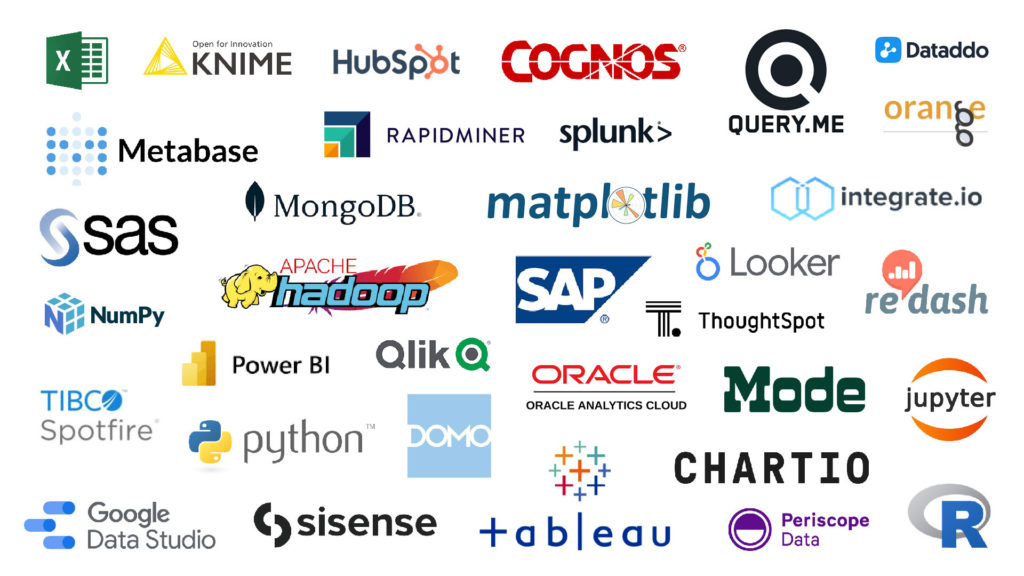Key Considerations for Successful Data Integrations

Remember the first time you saw a jigsaw puzzle? It looked like a daunting challenge, but as you began to put each piece together, a clear picture emerged. Data integration is much the same-by combining disparate sources of information, you can piece together a complete picture of your business. But with so many pieces, it can be hard to know where to start.
In this article, we’ll help you get a handle on the key considerations for successful data integration. By following our advice, you can ensure that your data is integrated efficiently, accurately, and securely.

Set Clear Goals
The first step in any data integration project is to define clear goals for the integration. What do you hope to achieve by combining different data sets? What insights are you hoping to gain? What business outcomes do you want to achieve? By answering these questions up front, you can ensure that everyone involved in the integration is working toward the same goals.
In addition to setting clear goals, it’s important to determine what data needs to be integrated and how it will be structured. This involves identifying the data sources and systems that are relevant to your goals, as well as defining the relationships between different data sets. By taking a structured approach to data integration, you can avoid common pitfalls such as duplicate data or inconsistent naming conventions.
Select the right tools and technologies
Once you’ve defined your goals and identified the data sources you want to integrate, the next step is to choose the right tools and technologies for the job. There are many different data integration tools and platforms available, each with its own strengths and weaknesses.

When evaluating potential tools and technologies, it’s important to consider factors such as compatibility with existing systems, scalability, ease of use, and cost. You’ll also want to look for solutions that can handle a variety of data types and formats, such as structured, semi-structured, and unstructured data.
Build a robust testing process
One of the most important steps in any data integration project is testing. Without a robust testing process, you risk introducing errors or inaccuracies into your data, which can have serious consequences for your business.
To ensure accuracy and reliability, it’s important to establish testing protocols and procedures up front. This includes defining the scope of testing, identifying test cases and scenarios, and allocating time and resources for testing. You’ll also want to consider using automated testing tools to streamline the process and reduce the risk of human error.
Read more: 6 Ways How Data Testing Can Transform Your Startup
Address data quality issues
Data quality is a critical issue in any data integration project. If the data you’re integrating is inaccurate or incomplete, it can lead to flawed insights and poor decision making. That’s why it’s important to address data quality issues as part of your integration process.
Common data quality challenges in integrations include duplicate data, inconsistent data formats, and missing or incomplete data. You can use a variety of strategies to overcome these challenges, including data cleansing, data matching, and data enrichment. By ensuring that your data is accurate, complete, and consistent, you can maximize the value of your integration efforts.
Ensure data security and privacy
Data security and privacy are top concerns for organizations integrating data from multiple sources. When sensitive information is shared across disparate systems, there’s a risk of data breaches, unauthorized access, and other security threats.

To mitigate these risks, it’s important to implement strong security measures and protocols as part of your integration process. This includes using encryption, access controls, and other security technologies to protect your data. You’ll also want to ensure that you’re compliant with relevant regulations and standards, such as GDPR and HIPAA, to avoid potential legal or regulatory issues.
Read more: Key Aspects to Consider when Creating Secure Data Platform
Collaborate across teams
Effective collaboration is critical to data integration success. Data integration projects typically involve multiple teams and stakeholders, including IT, data scientists, business analysts, and executives. To ensure that everyone is aligned and working toward the same goals, it’s important to foster a culture of collaboration and communication.
This means establishing clear lines of communication, providing regular updates on progress, and soliciting feedback and input from all stakeholders. It also means breaking down silos between different teams and departments and encouraging cross-functional collaboration and knowledge sharing.
Read more: Callenges for Tech Leaders in Collaboration with a Data Team
Choosing the Right Technology Partner
Finally, an additional consideration when it comes to data integration is choosing the right technology partner. Data integration is a complex process that requires expertise in a variety of areas, including data modeling, data mapping, data transformation, and data quality. Working with an experienced technology partner can help ensure that your data integration project runs smoothly and efficiently.
When evaluating potential technology partners, it’s important to consider factors such as experience, expertise, and track record. You’ll also want to look for partners who have a deep understanding of your industry and business needs, and who can provide customized solutions to meet your specific requirements.
Read more: Outsourcing Cloud Development: An Opportunity to Focus on Your Core Business
Wrap Up
Unlocking the full potential of your company’s data is no small feat. But by leveraging data integration, you can piece together a complete picture of your business and make more informed decisions. To achieve successful data integration, you must approach the process with careful planning and execution. This includes setting clear goals, choosing the right tools, building a robust testing process, addressing data quality issues, ensuring data security and privacy, collaborating effectively, and selecting the right technology partner.

By following these key considerations, you can execute your data integration project smoothly and efficiently, and maximize the value of your organization’s data. Whether you’re just getting started or looking to improve your existing processes, these principles can help set you up for success. So, take the first step toward unlocking your organization’s full potential – start planning your data integration project. Book a meeting today, we’d love to hear about your data integration challenges.
References
“What is Data Integration?” Informatica. https://www.informatica.com/data-integration.html
“5 Steps for Successful Data Integration.” Oracle. https://www.oracle.com/big-data/data-integration/5-steps-successful-data-integration.html
“Data Integration.” Gartner IT Glossary. https://www.gartner.com/it-glossary/data-integration/
“Data Integration Best Practices.” Talend. https://www.talend.com/resources/data-integration-best-practices/
“Data Integration: A Technical Overview.” IBM. https://www.ibm.com/cloud/learn/data-integration






